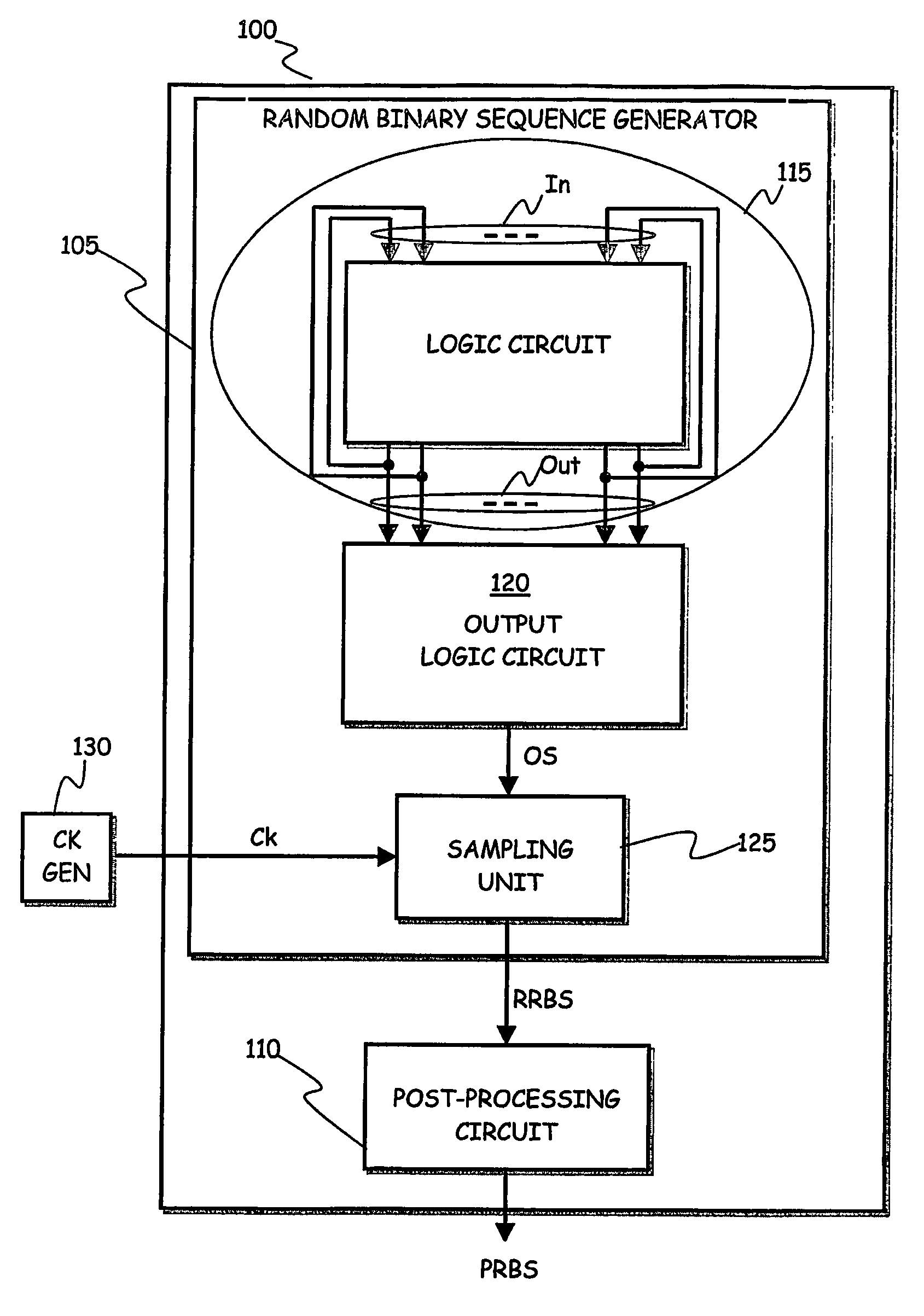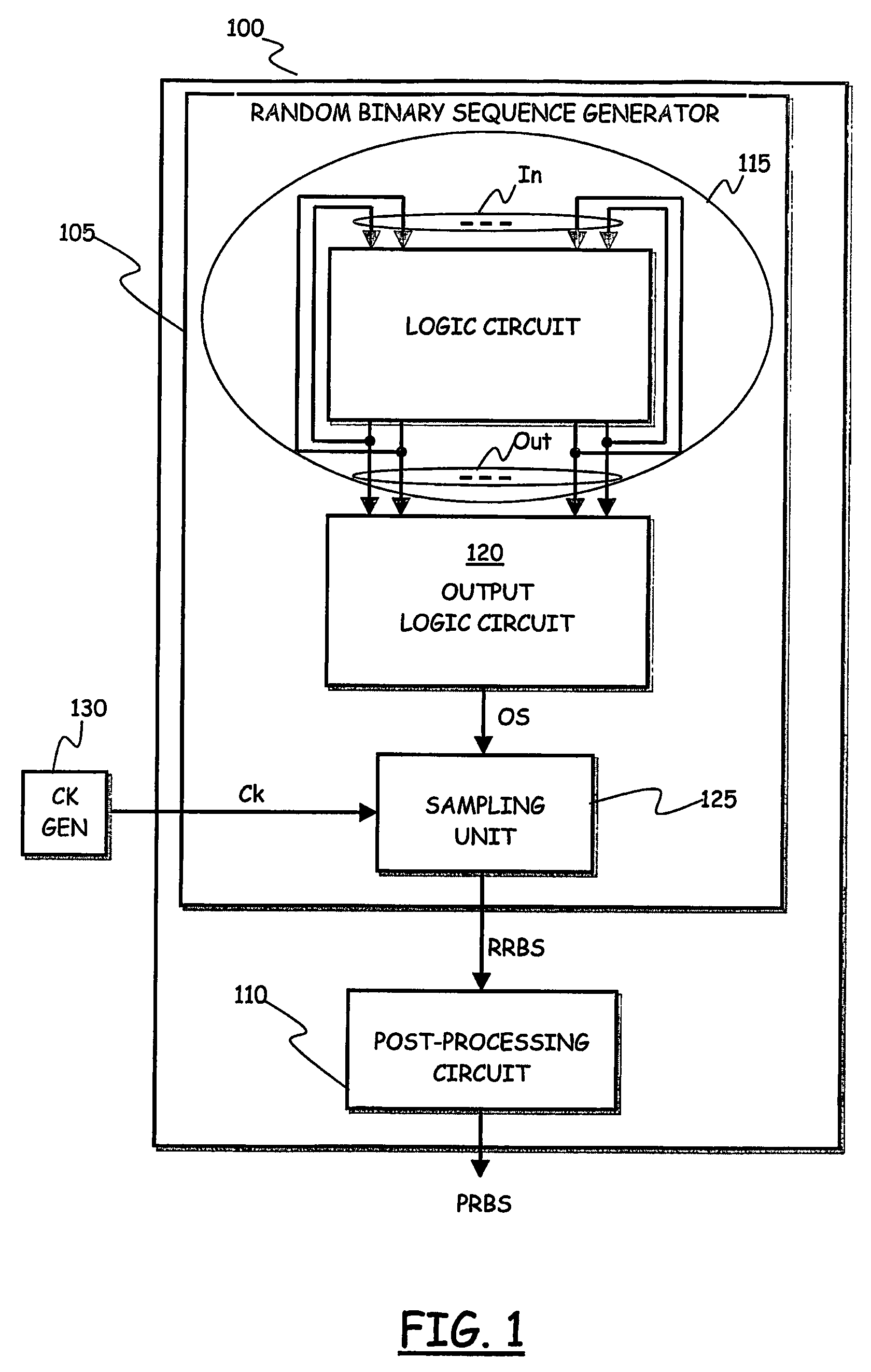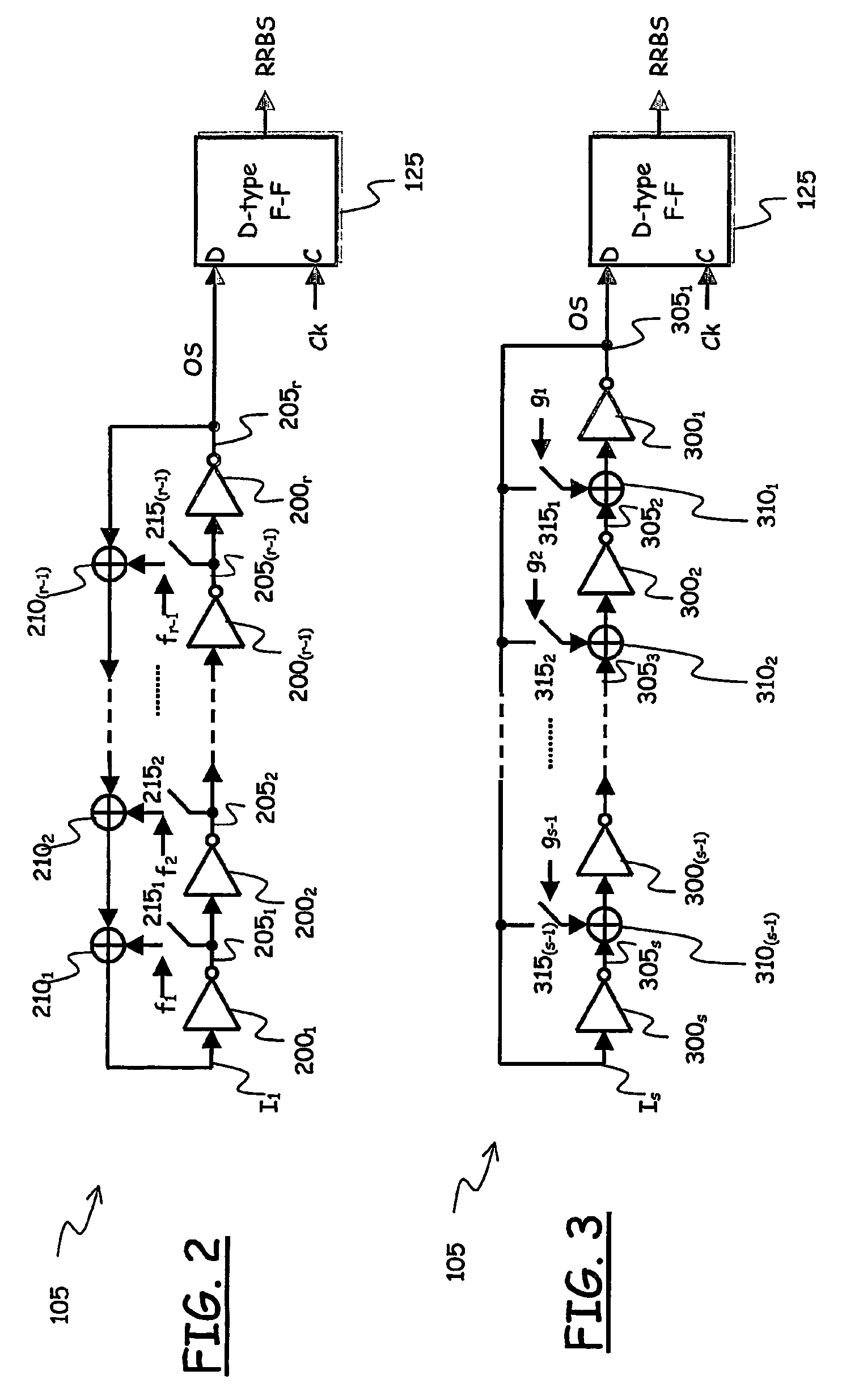Random number generation based on logic circuits with feedback
a logic circuit and random number technology, applied in the direction of pulse technique, digital data processing details, instruments, etc., can solve the problems of reducing the degree of randomness of the output sequence produced, reducing the degree of randomness of the output sequence, and not being very reliable, so as to improve the robustness of the increase the randomness of the output raw random binary sequence, and remove residual bias and other redundancy
- Summary
- Abstract
- Description
- Claims
- Application Information
AI Technical Summary
Benefits of technology
Problems solved by technology
Method used
Image
Examples
Embodiment Construction
[0090]Referring to the drawings, in FIG. 1, the general structure of a Random Number Generator (RNG) according to an embodiment of the present invention is schematically shown, in terms of the relevant functional blocks. The RNG, globally identified by 100, includes a random binary sequence generator 105, generating a raw random binary sequence RRBS that is supplied to a post-processing circuit 110 for generating a purely random binary sequence PRBS.
[0091]According to an embodiment of the present invention, the random binary sequence generator 105 includes a logic (i.e., combinatorial) circuit with feedback 115, having a set of logic circuit inputs, for receiving input signals In to the logic circuit, and a set of logic circuit outputs, for providing output signals Out, which are fed back to the logic circuit inputs. The logic circuit with feedback 115 corresponds to an associated Finite-State Machine (FSM) having a state-transition function. In particular, the logic circuit with fe...
PUM
 Login to View More
Login to View More Abstract
Description
Claims
Application Information
 Login to View More
Login to View More - R&D
- Intellectual Property
- Life Sciences
- Materials
- Tech Scout
- Unparalleled Data Quality
- Higher Quality Content
- 60% Fewer Hallucinations
Browse by: Latest US Patents, China's latest patents, Technical Efficacy Thesaurus, Application Domain, Technology Topic, Popular Technical Reports.
© 2025 PatSnap. All rights reserved.Legal|Privacy policy|Modern Slavery Act Transparency Statement|Sitemap|About US| Contact US: help@patsnap.com



